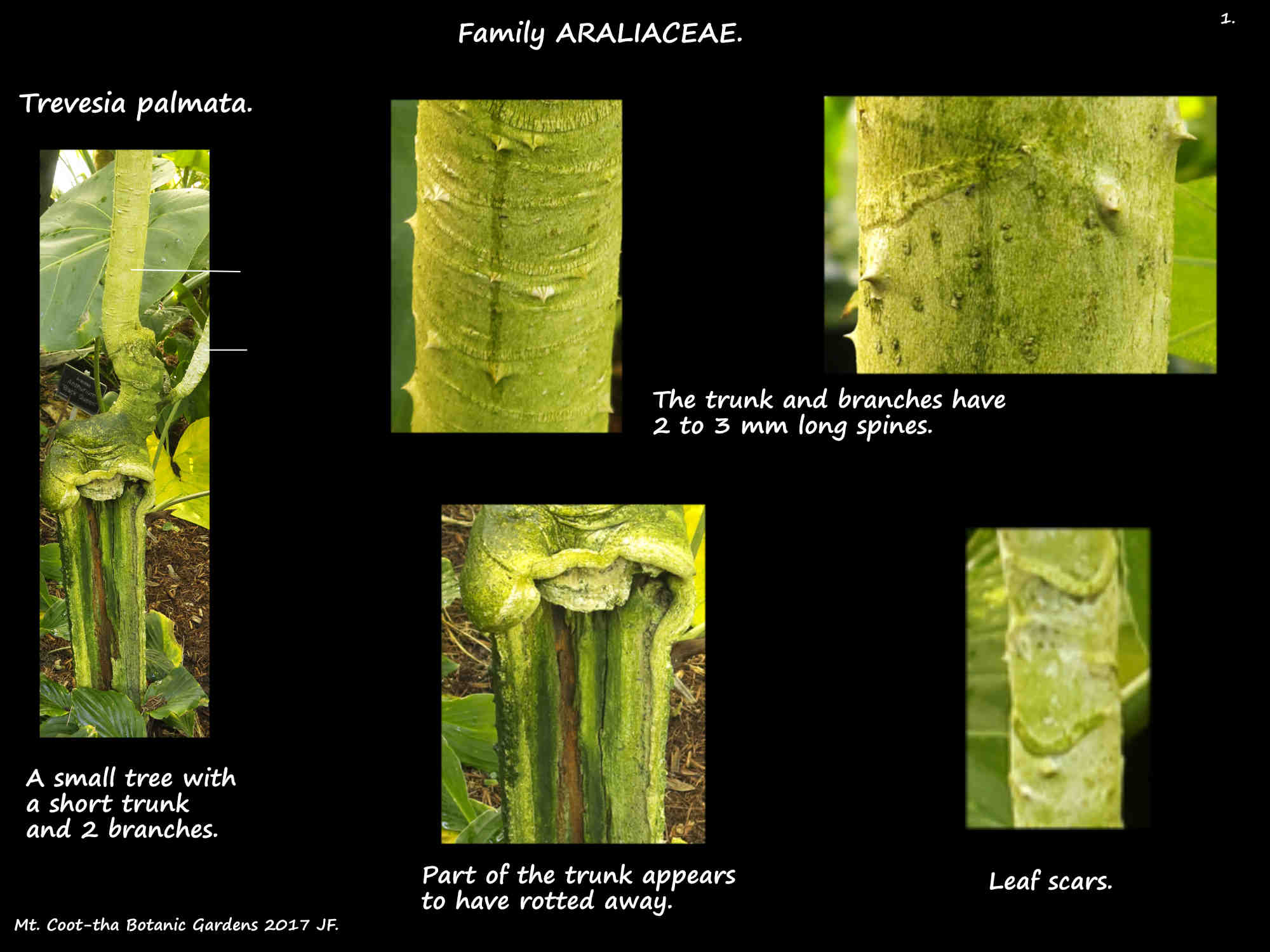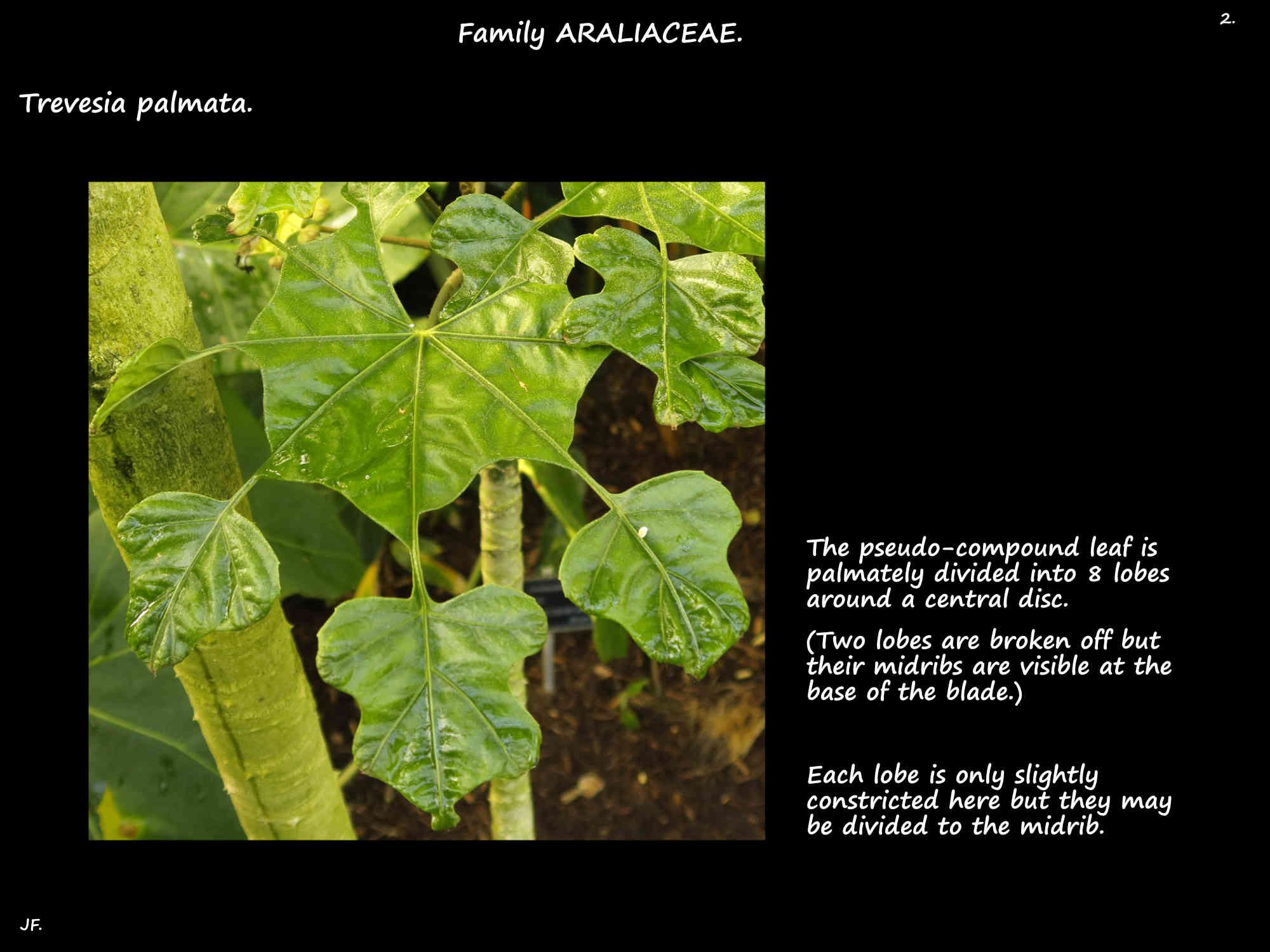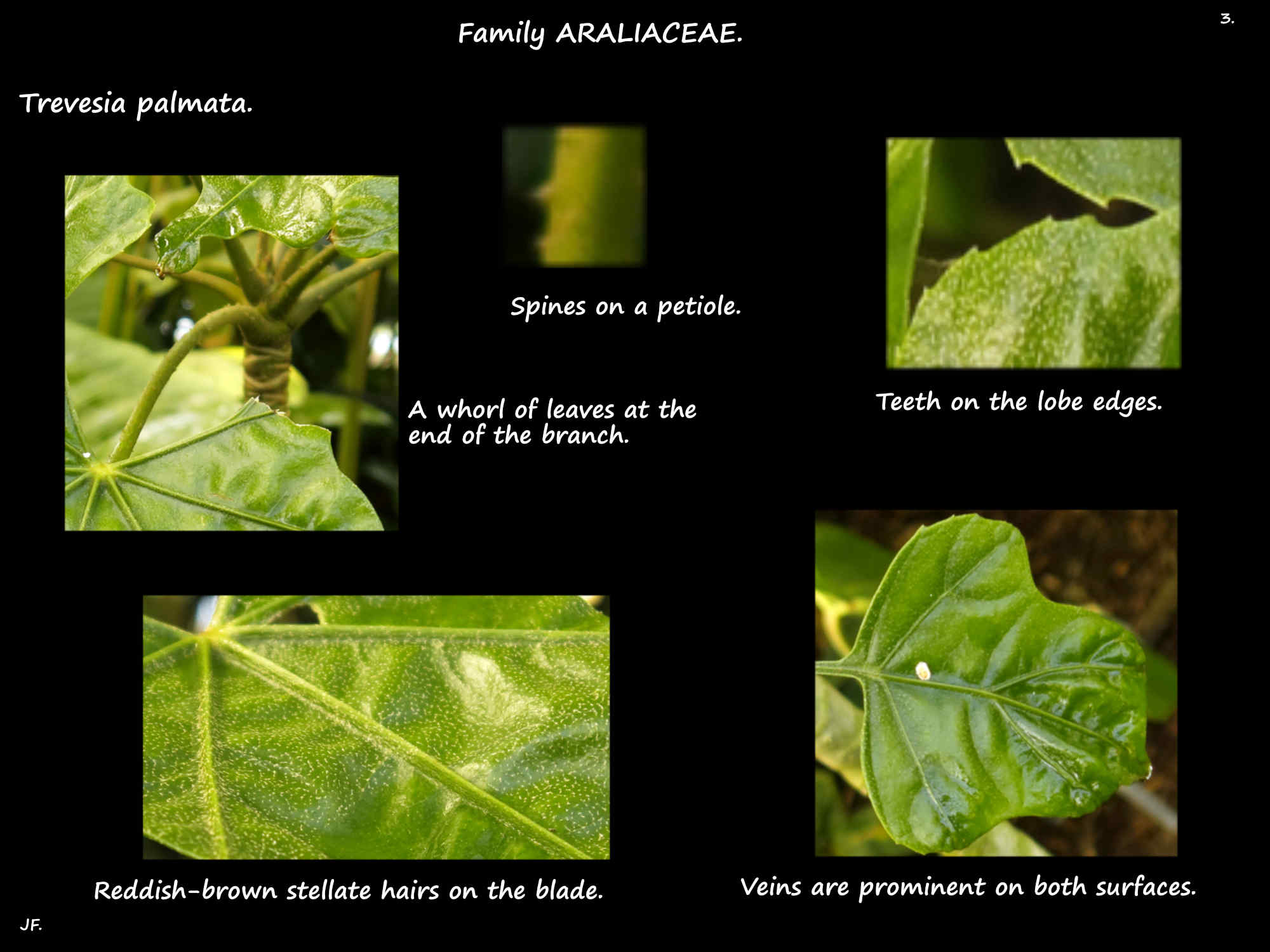Trevesia palmata.
They are evergreen trees up to 8 m tall.
The few branches they have arise near the base.
The grey bark has 2 to 3 mm long prickles and reddish branched hairs.
The leaves are on petioles up to around 80 cm long with fused stipules at the base.
Petioles may have prickles and there are hairs.
The palmately lobed leaves can be up to 90 cm across.
The blade has a central disc and 5 to 10 radiating lobes.
In juvenile leaves the lobes are undivided.
Adult leaves may have the lobes slightly incised or dissected to the midrib.
There are some teeth on the lobe edges.
Both surfaces may have dense branched hairs especially on the midrib and veins.
The branched inflorescences (panicles), up to 60 cm long are terminal or axillary.
When young there are dense stellate hairs but these decrease over time.
Each inflorescence branch, on a peduncle up to 17 cm long holds umbels on secondary peduncles.
There are hairy bracts at the base of all the peduncles.
Each of the 20 or more yellow flowers in an umbellule is on a pedicel.
The hairy calyx has small lobes equal in number to the petals.
There are 8 to 10 or 12 petals up to 5 mm long that are wholly or partly fused.
There are 7 to 12 stamens on filaments around 5 mm long.
The ovary has 7 to 12 (16) locules.
The styles are fused into a stylopodium a few mms high and wide.
The smooth or ribbed fruit are around 2 cm across with a persistent stylopodium.
J.F.




